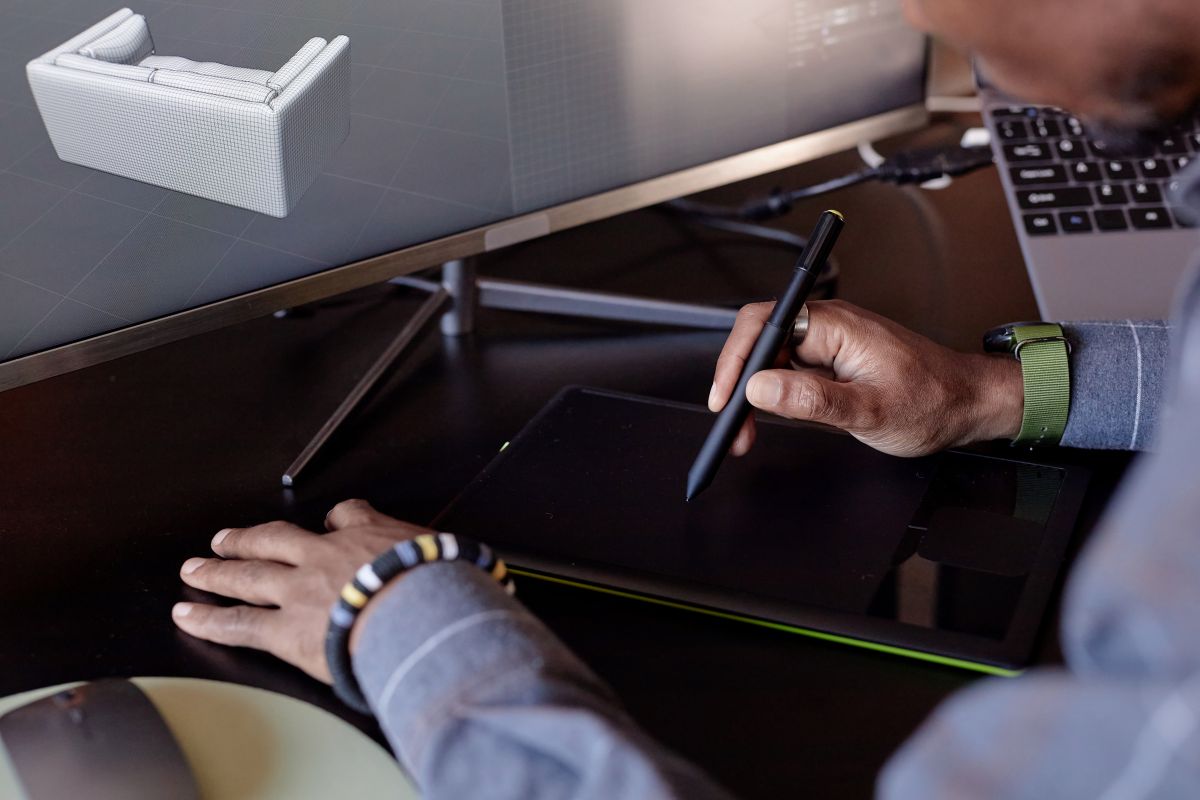
How Animation Studios in South Africa Combine Whiteboard & 3D Animation
Explaining technical, procedural, or conceptual ideas through animation often demands more than one visual approach. Some audiences respond well to high-level diagrams and sequences; others need dimensional context to fully grasp what is being shown. Hybrid explainer videos meet this challenge by combining two well-established formats, whiteboard illustration and 3D animation, into a single, intentional narrative flow. Rather than choosing between simplicity or precision, hybrid explainers allow both to exist side by side, with each used at the right moment to support understanding. For those considering animation studios in South Africa, this method offers a practical and thoughtful alternative to single-style animation. It introduces flexibility without confusion, clarity without oversimplification, and variation without losing narrative consistency. As more organisations explore how animation can support communication strategies across education, marketing, or training content, hybrid explainers offer an option that reflects how people learn: in layers, not in silos.
Whiteboard + 3D: What Makes a Hybrid Explainer?
Concept
A hybrid explainer integrates the simplicity of whiteboard animation with the spatial realism of 3D animation. The transition between styles is intentional. It lets the viewer follow a line-drawn idea as it transforms into a more dimensional representation.
Technical Perspective
The animation often begins with sketch‑style drawing, an illustrated hand may draw a concept, a process, or an environment. As the narrative deepens, the visuals evolve into textured 3D renderings. Each transition is carefully planned to maintain flow, pacing, and visual consistency. The result is a dual-style experience that guides understanding rather than distracting from it.
Use in Practice
An explainer for a manufacturing process might start with a simple sketch of a machine’s workflow and shift into a rotating 3D model of the machine itself. The first visual shows how it fits into the system, the second reveals how it actually works. When used with intention, this blend of formats allows complex information to unfold in layers, first conceptually, then visually. Animation studios in South Africa that integrate hybrid explainers into their production strategies can offer clients a structured way to communicate ideas that require both overview and depth.
Why Hybrid, and Why Now?
Purpose-Driven Style
Each animation format serves a purpose. Whiteboard visuals provide narrative logic and structure, while 3D delivers spatial accuracy and visual immersion. The hybrid approach acknowledges that business communication often demands both.
Precision Without Overwhelm
Too much 3D can feel dense. Too much sketching may lack depth. The hybrid model strikes a balance. It offers a scaffold (whiteboard) followed by depth (3D). For viewers, this means easier cognitive processing and better retention of key points.
Where This Works Best
- Technical product demos: Start with a high-level sketch, then transition into a 3D demonstration.
- Educational and internal training videos: Introduce procedures with sketches, then show detail using 3D sequences.
- Brand or innovation storytelling: Use sketches to build anticipation, then switch to 3D for credibility.
By offering this level of depth and nuance, animation studios in South Africa can present hybrid explainers as a meaningful alternative, not a novelty.
Smart Use Cases for Hybrid Animation
Healthcare and Medical Sectors
Sketches help simplify complex processes for patient education, while 3D reveals internal procedures, mechanisms, or medical equipment in ways that aid professional comprehension. This combination supports communication across audiences with varying levels of expertise.
Software and Technology Workflows
A whiteboard sequence introduces a conceptual system or logic path. The transition to 3D enables visualisation of interface features, backend architecture, or device interaction. This is particularly useful for companies launching new tech platforms.
Training and Compliance Content
Whiteboard drawings can guide learners through abstract policy or behaviour, while 3D sequences provide visual clarity for machinery, locations, or operational procedures. This approach supports organisations where procedural accuracy matters.
Government and Public Sector Education
Public campaigns or citizen education videos can benefit from this method. A sketch shows intent and structure, such as a city plan, before the camera moves into a rendered 3D space to show outcomes or future models. Animation studios in South Africa can use hybrid explainers to serve both public understanding and professional instruction across diverse industries.
Strategic Execution: How the Hybrid Process Works
Planning the Style Flow
Hybrid animation starts with narrative intent. The script determines which parts are best suited for hand-drawn illustration and which require 3D clarity. This mapping happens before visual design begins, ensuring the storytelling remains uninterrupted across transitions.
Design Matching and Cohesion
Whiteboard and 3D elements must feel part of the same visual language. That means harmonising colour tone, shadow logic, and animation rhythm. Transitions must support the message, not draw attention to the technique.
Audio Synchronisation
Timing voiceover cues to match the visual shift between formats is crucial. This alignment helps the viewer process a message as continuous, rather than fragmented.
When animation studios in South Africa execute this process well, viewers move through the animation seamlessly, engaged by the flow, not distracted by the mechanics.
Techniques That Support Transitions and Structure
Transitions That Teach
A common hybrid technique involves showing a sketched object morph into a 3D one in real time. This metaphorical reveal supports understanding by showing not just what something is, but what it becomes.
Overlay Illustrations
Some hybrid animations use whiteboard lines to draw over a 3D scene, adding emphasis, annotations, or movement trails. This creates a visual hierarchy that keeps the message sharp.
Character Movement Shifts
Characters or icons might begin as simple outlines, then transition into textured 3D avatars. This is particularly effective when explaining organisational structures or team workflows.
These visual moments are more than aesthetic, they serve a communication function. They reinforce information through controlled variation, which is something animation studios in South Africa can offer clients seeking intelligent design.
When to Commission a Hybrid Explainer
Signs This Style Is the Right Fit
- You have layered audiences: A mixed group of technical and non-technical viewers.
- You want to emphasise both process and product: Sketches explain ‘why’, 3D shows ‘how’.
- Your story involves change or development: Hybrid transitions can show evolution.
Scenarios Worth Exploring
Environmental projects
Start with whiteboard illustrations to outline broad sustainability goals, policy shifts, or community efforts in a friendly and accessible way. Then transition into 3D to visualise long-term outcomes, like greener infrastructure, ecosystem recovery, or the effects of carbon offsets. Animation studios in South Africa use this format effectively in public awareness campaigns where education and optimism must go hand in hand.
Scientific research
Open with simplified whiteboard diagrams to introduce the research question or experimental setup. Use 3D animation to simulate complex processes, molecular interactions, geological formations, or mechanical functions, that are difficult to communicate with traditional footage or flat visuals. This sequence allows clients to present both clarity and credibility when communicating with non-specialist stakeholders.
B2B technology services
Whiteboard visuals can introduce a pain point in an industry workflow, such as slow onboarding or inefficient logistics. Then move to 3D to demonstrate how a proprietary platform, tool, or process solves that issue in action. Animation studios in South Africa can use this narrative flow for SaaS companies to show both empathy and authority in explaining product-market fit.
Health and safety training
Start with a fully rendered 3D workplace simulation, for example, a near-miss incident in a warehouse or a mechanical failure on a factory floor. Then reverse into whiteboard to pause, rewind and illustrate the preventative actions or decision-making path that would have avoided the risk. This structure supports layered comprehension, the emotional response to danger followed by the logical framework of prevention.
Product overengineering critique
Begin with a highly detailed 3D visualisation of a product that is overly complex, overdesigned, or inefficient. Transition to whiteboard to strip it back, showing what features matter most, what can be simplified, and how the experience could improve. This is particularly effective for internal communications, product redesign discussions, or pitch decks seeking buy-in for leaner development strategies.
Thinking Beyond Convention
Hybrid animation does not compete with traditional formats, it adds another dimension to how ideas can be communicated. When explanation alone feels too static, or when imagination risks overwhelming clarity, combining styles becomes a smart way to balance both. For scenarios that demand logic and emotional intelligence to coexist, this technique opens creative ground worth exploring.
Animation studios in South Africa are well-placed to guide clients through these opportunities. Their broad capabilities across visual techniques mean the hybrid model is not just a novelty, it is a practical design approach that aligns well with complex business needs.
So, where might dual visual logic provide new clarity?
What message could gain strength from being unpacked across two styles instead of one?
For those rethinking how they communicate internally, externally, or educationally, hybrid explainers may offer the next progression, a refined, layered way to speak to diverse audiences.
If you see potential in hybrid explainers to sharpen your communication, contact Sound Idea Digital to explore how this approach can be adapted for your audience. We can discuss how blending styles might open new ways for your message to connect across different teams and stakeholders.
We are a full-service Web Development and Content Production Agency in Gauteng specialising in Video Production, Animation, eLearning Content Development, Learning Management Systems, and Content Production.
Contact us for a quote. | enquiries@soundidea.co.za | https://www.soundideavideoproduction.co.za| +27 82 491 5824 |
Additional Insights on Animation Techniques
For those interested in broadening their understanding of animation’s versatility and practical considerations, the following articles offer insightful viewpoints. They address common misconceptions about whiteboard animation, clarify factors that shape animation budgets, and provide an accessible explanation of how 3D animation is crafted. These readings complement the exploration of hybrid explainers by adding depth to related topics.
Myth-Buster: “Whiteboard Animations Are Only for Explainers”
Animation Company South Africa: What Influences Animation Cost?

